Looping around the Garden of Stories is a path that returns us to where we began.
Along this part are stories of past techniques that have been revived. What were museum artefacts lying dormant on a shelf can now become part of everyday life. They bring with them a sense of ritual, ceremony and connection across time that gives new depth to a contemporary life stretched thin.
A guiding principle comes from the Tongan philosophy of Tavaism, in which the past is seen as not something receding behind us, as presumed in Western modernism. The past is always before us, as explained by Tonga philosopher Tevita Ka’ili:
“In paradoxical ways, it is, in the Moana, symbolically thought that people walk forward into the past and, contemporaneously, walk backward into the future, both in the present, where the elusive, already-taken-place past and illusive, yet-to-take-place future are, and in the social process, constantly mediated in the ever-changing present. In historical ways, however, it logically follows that the past, which has stood the test of time-space, is placed in the front of people in the present as guidance, and the unknown future is located in their back in the present, informed by past experiences, with the past and future permanently negotiated in the conflicting present.”
Ka‘ili, Tevita O., et al. “Introducing Tā-vā (time-Space): The Birth of an Indigenous Moana Theory.” Pacific Studies, vol. 40, no. 1/2, 2017, pp. 1–17.
✿
This path is associated with We Tripantu, the New Year of the Mapuche people which celebrates the return of the sun. It occurs at Winter Solstice on June 21, the shortest day of the year in the southern hemisphere.
✿
 Prita Tina Yeganeh ✿ My Soil Farsh فرش - Lamisse Hamouda describes how an artist of Iranian heritage transforms labour into ceremony by making a Persian carpet out of soil.
Prita Tina Yeganeh ✿ My Soil Farsh فرش - Lamisse Hamouda describes how an artist of Iranian heritage transforms labour into ceremony by making a Persian carpet out of soil.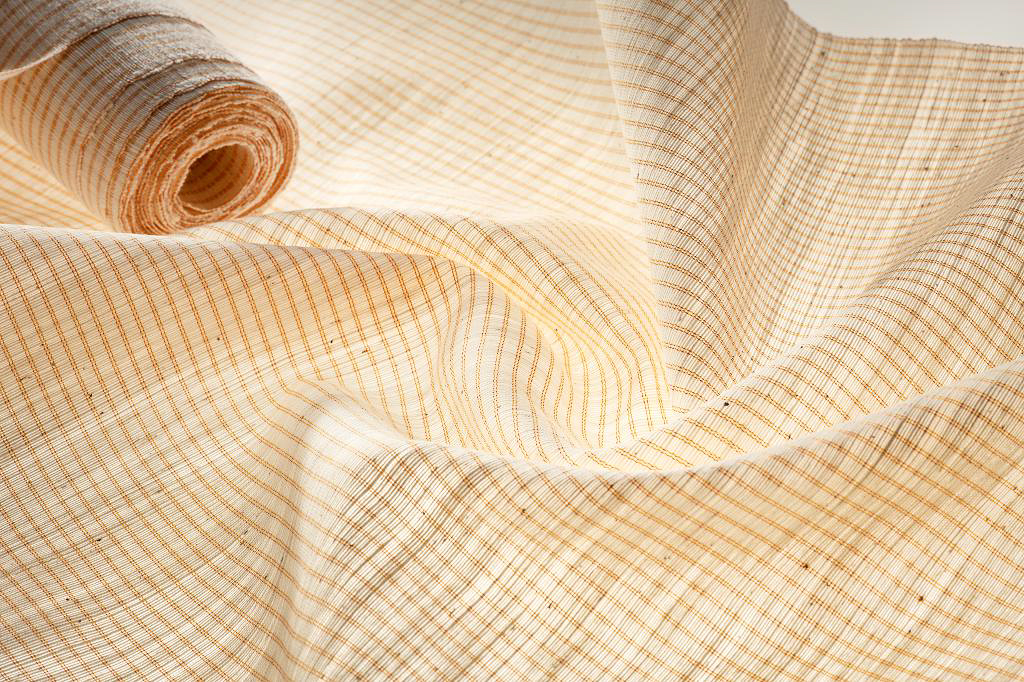 Lee Ji Won: Ancient weaves now - Lee Ji Won (이지원) is a young Korean weaver who revives traditional East Asian textile techniques.
Lee Ji Won: Ancient weaves now - Lee Ji Won (이지원) is a young Korean weaver who revives traditional East Asian textile techniques. Kampoeng Dolanan: The game must go on - Janet Teowarang recounts the history of a remarkable Indonesian organisation that seeks to preserve traditional games.
Kampoeng Dolanan: The game must go on - Janet Teowarang recounts the history of a remarkable Indonesian organisation that seeks to preserve traditional games.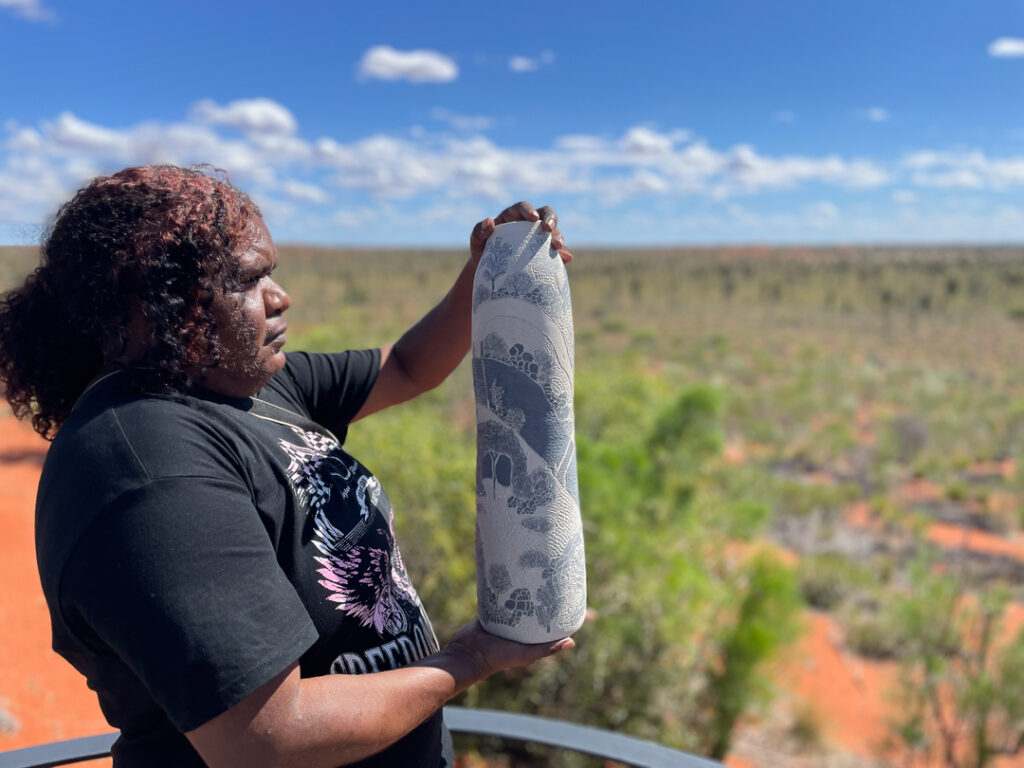 Anne Nginyangka Thompson ✿ My favourite place out bush - Anne Nginyangka Thompson talks about her commitment to preserving culture and Country through her ceramic work.
Anne Nginyangka Thompson ✿ My favourite place out bush - Anne Nginyangka Thompson talks about her commitment to preserving culture and Country through her ceramic work.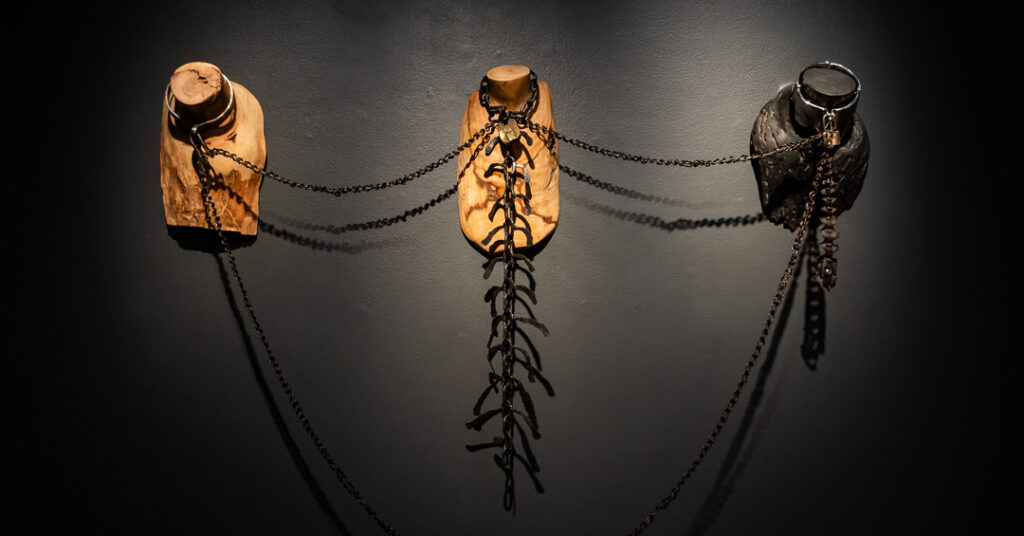 Long dance to home - Dominic White continues the dance of his forebears with a material art that rediscovers Country.
Long dance to home - Dominic White continues the dance of his forebears with a material art that rediscovers Country. 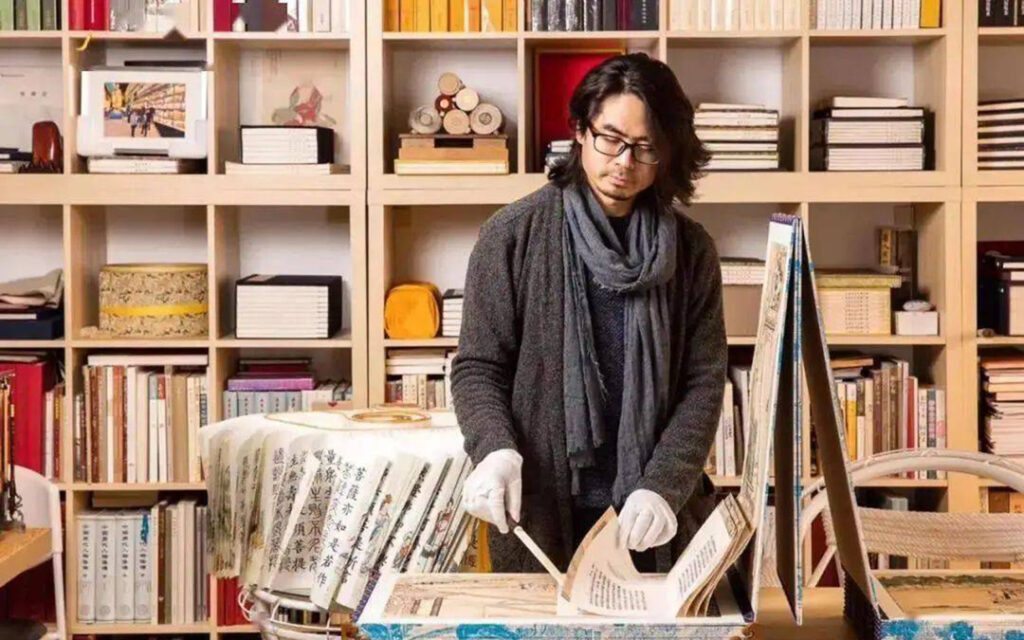 Dragon Scale Binding: The revival of an ancient Chinese book format - Yunmeng Jia is impressed with the vision and dedication of Zhang Xiaodong, the sole inheritor of a unique bookbinding craft and a Chinese intangible cultural heritage.
Dragon Scale Binding: The revival of an ancient Chinese book format - Yunmeng Jia is impressed with the vision and dedication of Zhang Xiaodong, the sole inheritor of a unique bookbinding craft and a Chinese intangible cultural heritage.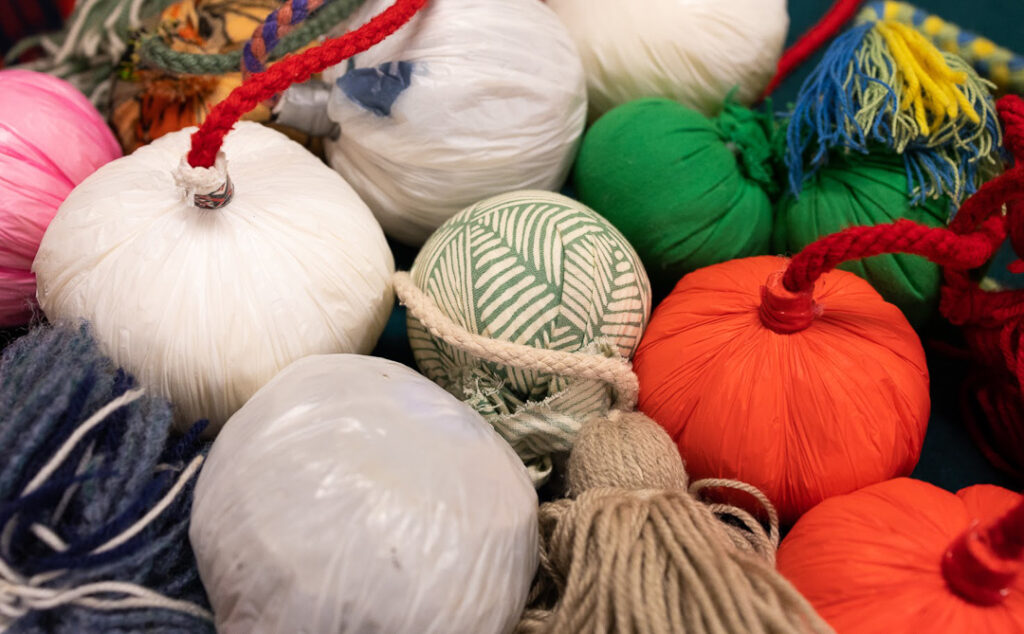 Poi: The mesmerising sound of living taonga - For Isaac Te Awa, poi is not only an accessory for dazzling performances, it is also a traditional Māori instrument used for practical and cultural reasons in itself.
Poi: The mesmerising sound of living taonga - For Isaac Te Awa, poi is not only an accessory for dazzling performances, it is also a traditional Māori instrument used for practical and cultural reasons in itself.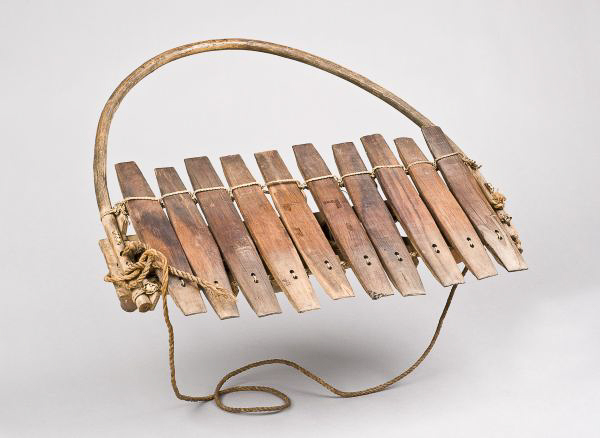 Decolonising the manza xylophones of Azande - Adilia On-ying YIP writes about a Congolese xylophone that became a museum artefact in Belgium. She believes it should be returned and revived as a musical instrument.
Decolonising the manza xylophones of Azande - Adilia On-ying YIP writes about a Congolese xylophone that became a museum artefact in Belgium. She believes it should be returned and revived as a musical instrument.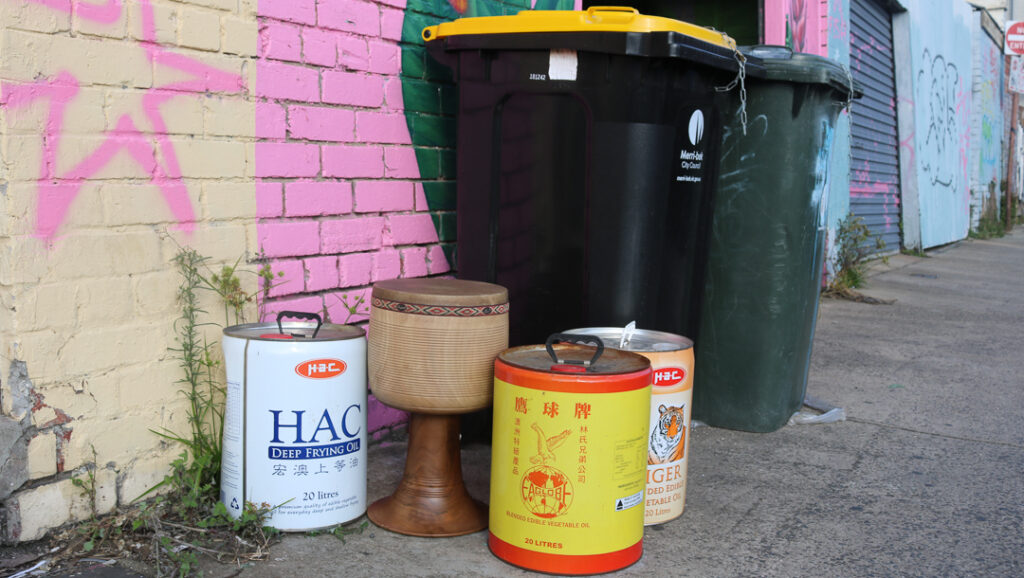 My lockdown Tonbak: A homemade industrial musical heritage - Through re-igniting the spirit of Industrial music alongside the emerging experimental Iranian music, Jahan Rezakhanlou innovated homemade Iranian percussion during the COVID lockdowns.
My lockdown Tonbak: A homemade industrial musical heritage - Through re-igniting the spirit of Industrial music alongside the emerging experimental Iranian music, Jahan Rezakhanlou innovated homemade Iranian percussion during the COVID lockdowns. Manchay P’uytu del Mapocho: A proposal to decolonise listening - Francisca Gili explores the musical legend of a bone flute played inside a ceramic vessel. How was it made and what did it mean?
Manchay P’uytu del Mapocho: A proposal to decolonise listening - Francisca Gili explores the musical legend of a bone flute played inside a ceramic vessel. How was it made and what did it mean?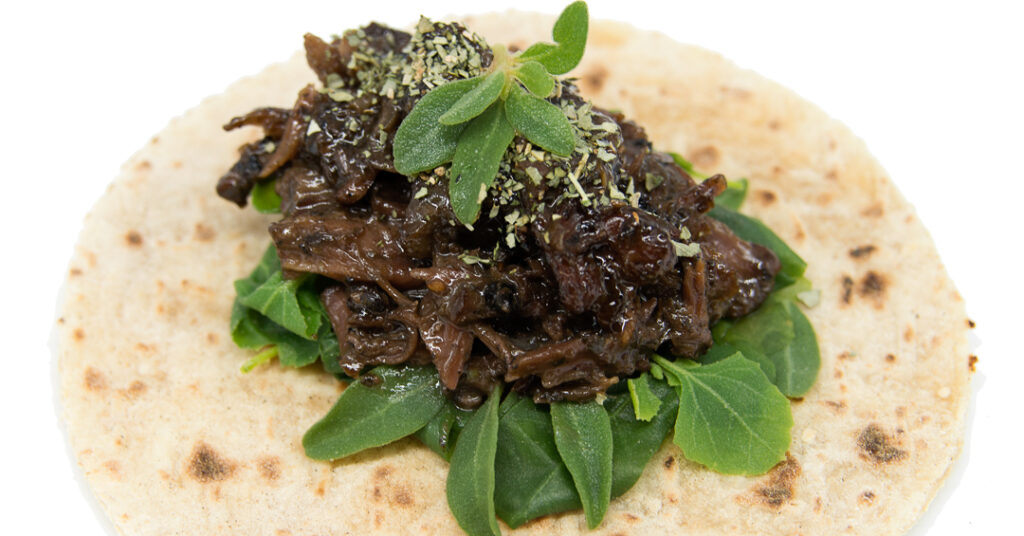 James Tylor ✿ In search of mai - Prompted by the experience of foraging in Europe, Caitlin Eyre accompanies James Tylor on a quest to recover the taste of native Australian bush foods.
James Tylor ✿ In search of mai - Prompted by the experience of foraging in Europe, Caitlin Eyre accompanies James Tylor on a quest to recover the taste of native Australian bush foods. Late Muhammad Nawaz: The unsurpassable master potter from Harappa, Pakistan - Noorjehan Bilgrami and J. Mark Kenoyer honour Muhammad Nawaz, who brought back to life the ceramic traditions of the ancient Indus Valley.
Late Muhammad Nawaz: The unsurpassable master potter from Harappa, Pakistan - Noorjehan Bilgrami and J. Mark Kenoyer honour Muhammad Nawaz, who brought back to life the ceramic traditions of the ancient Indus Valley.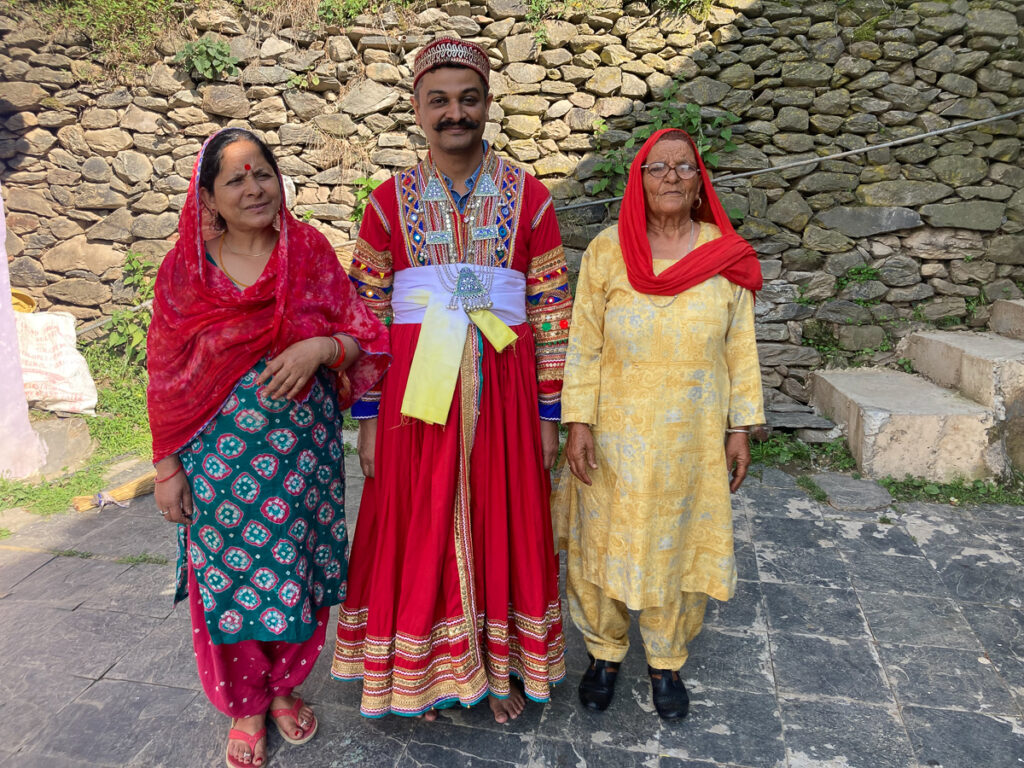 To steal a golden earring: In search of the chola in the mountains of Himachal Pradesh - LOkesh Ghai continues his journey through the Himalayas in quest of the legendary choga over-garment.
To steal a golden earring: In search of the chola in the mountains of Himachal Pradesh - LOkesh Ghai continues his journey through the Himalayas in quest of the legendary choga over-garment.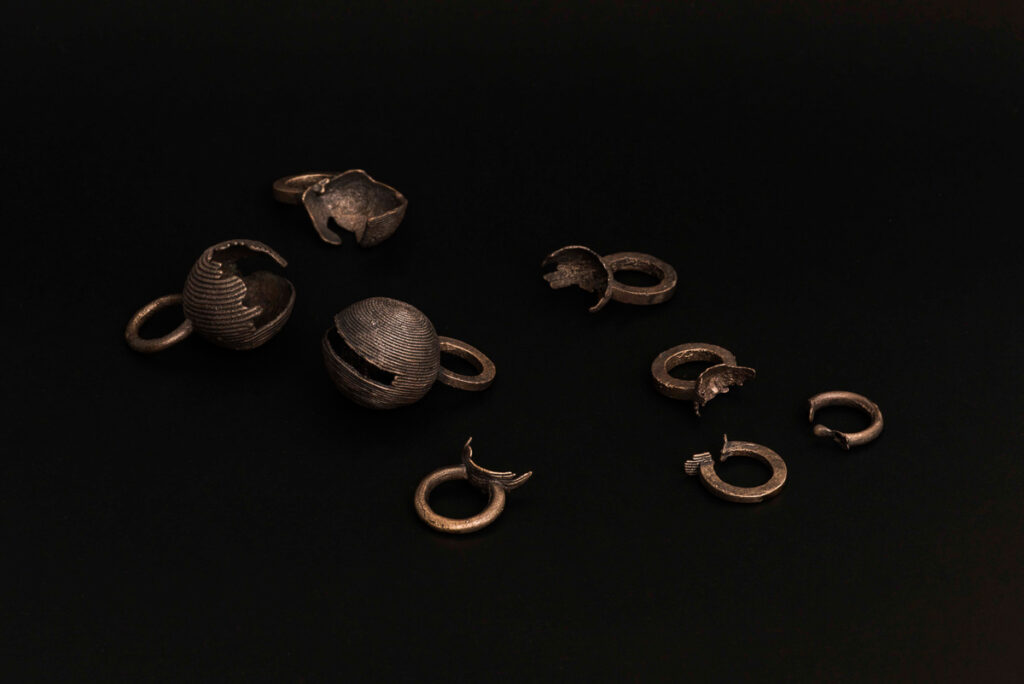 Kan Doenthang: Lost wax to recover a disappearing world - Rudee Tancharoen shares the lost wax casting work made with the village of Baan Pa-Ao for the sake of staying in touch with a grounded way of life.
Kan Doenthang: Lost wax to recover a disappearing world - Rudee Tancharoen shares the lost wax casting work made with the village of Baan Pa-Ao for the sake of staying in touch with a grounded way of life.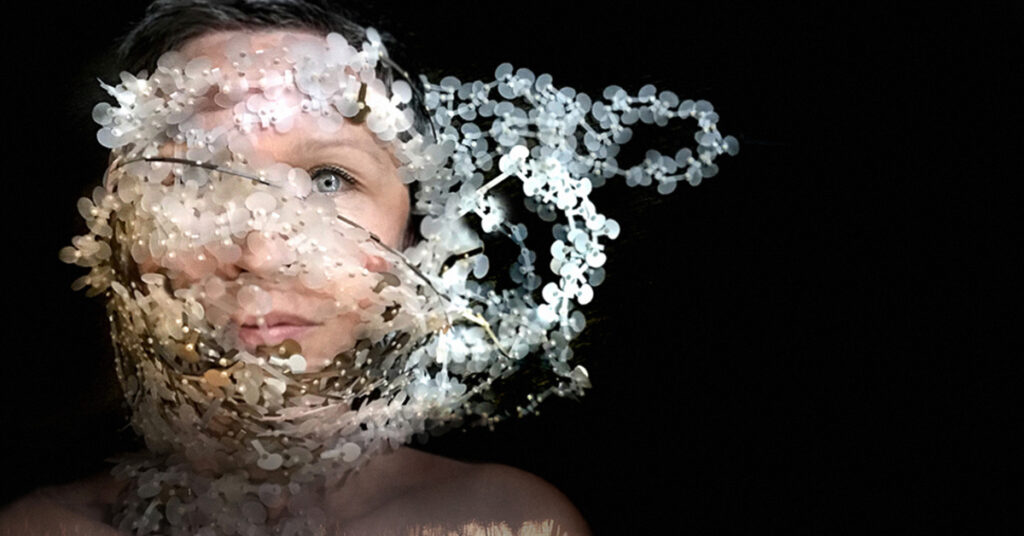 New Spring, Old Gods: Adornment for the people of the bear - Inari Kiuru shares the Finnish cultural roots that ground her work, reflecting an enchantment of nature.
New Spring, Old Gods: Adornment for the people of the bear - Inari Kiuru shares the Finnish cultural roots that ground her work, reflecting an enchantment of nature. 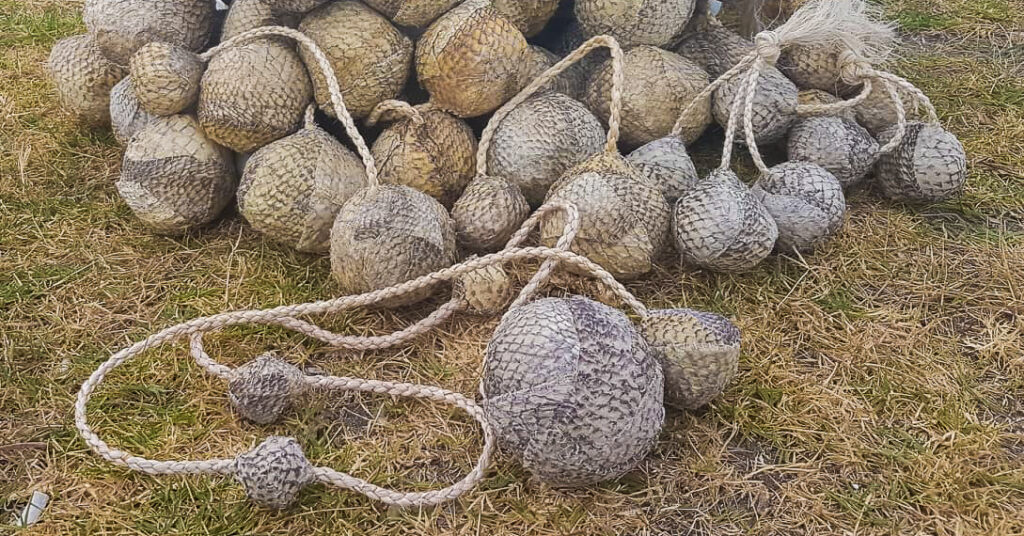 Tangimoe Clay ✿ Crafting the world on a string - For Keri-Mei Zagrobelna, Tangimoe Clay's poi evoke memories of crafting these Māori balls on a string out of found materials.
Tangimoe Clay ✿ Crafting the world on a string - For Keri-Mei Zagrobelna, Tangimoe Clay's poi evoke memories of crafting these Māori balls on a string out of found materials. “Things from before”: Baskets in Gorongosa - Frances Potter reflects on the role of craft in Gorongosa, Mozambique, where life is precarious but memories are long.
“Things from before”: Baskets in Gorongosa - Frances Potter reflects on the role of craft in Gorongosa, Mozambique, where life is precarious but memories are long.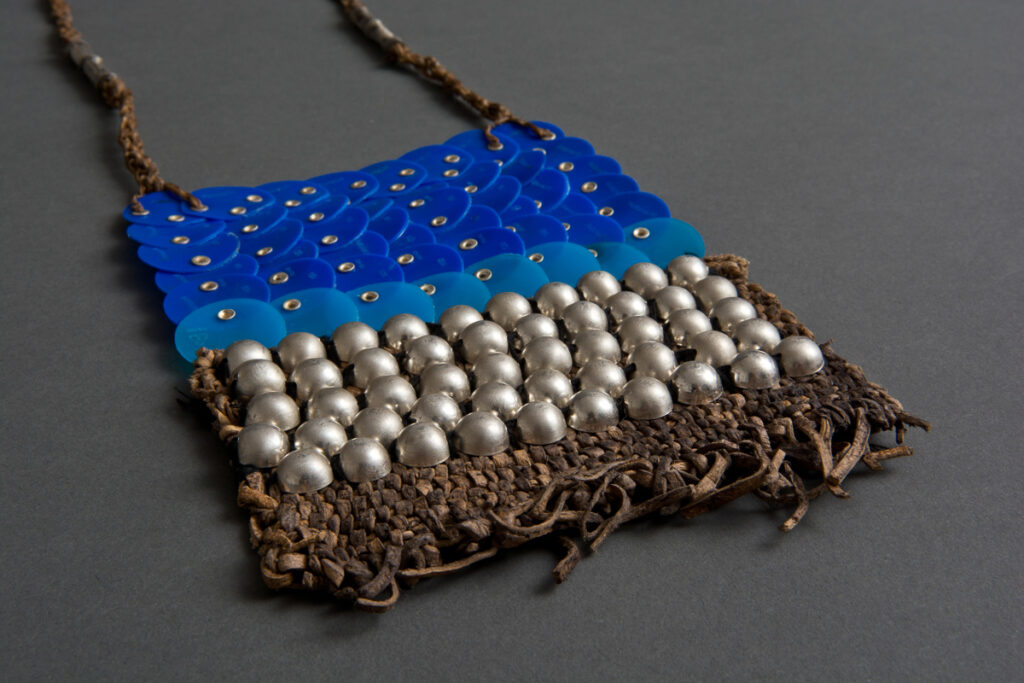 Shaabook silver jewellery in Oman: A secret currency of adornment - Amal Al-Ismaeli was inspired by her grandmother to discover a traditional adornment that is designed by women for women.
Shaabook silver jewellery in Oman: A secret currency of adornment - Amal Al-Ismaeli was inspired by her grandmother to discover a traditional adornment that is designed by women for women.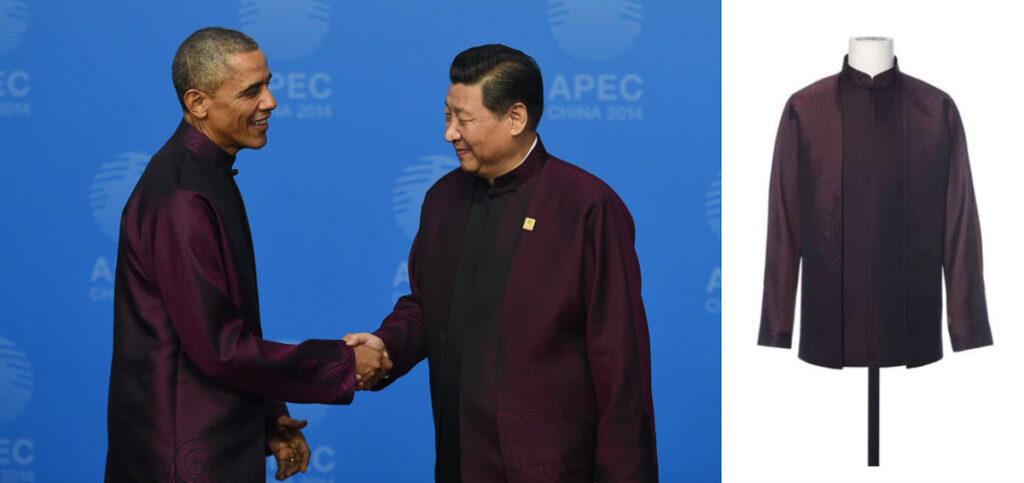 Song brocade: The lost past and the promising future in Chinese crafts - Peixuan Lyu recovers her childhood memories of brocade in the prestigious work of venerable Ms Xiaoping Qian.
Song brocade: The lost past and the promising future in Chinese crafts - Peixuan Lyu recovers her childhood memories of brocade in the prestigious work of venerable Ms Xiaoping Qian. Anying CHEN: Craft revivals in today’s China - The tenth talk in our Reinventing the Wheel series goes to mainland China, where Professor Anying CHEN discusses many projects by his university that revive traditional crafts across the country.
Anying CHEN: Craft revivals in today’s China - The tenth talk in our Reinventing the Wheel series goes to mainland China, where Professor Anying CHEN discusses many projects by his university that revive traditional crafts across the country. Make the Qanats flow: Women revive a patriarchal tradition - Nina Aminzadeh Goharrizi heralds an inspiring project from the Takab district of Kerman province, Iran, in which local women take tradition into their own hands.
Make the Qanats flow: Women revive a patriarchal tradition - Nina Aminzadeh Goharrizi heralds an inspiring project from the Takab district of Kerman province, Iran, in which local women take tradition into their own hands.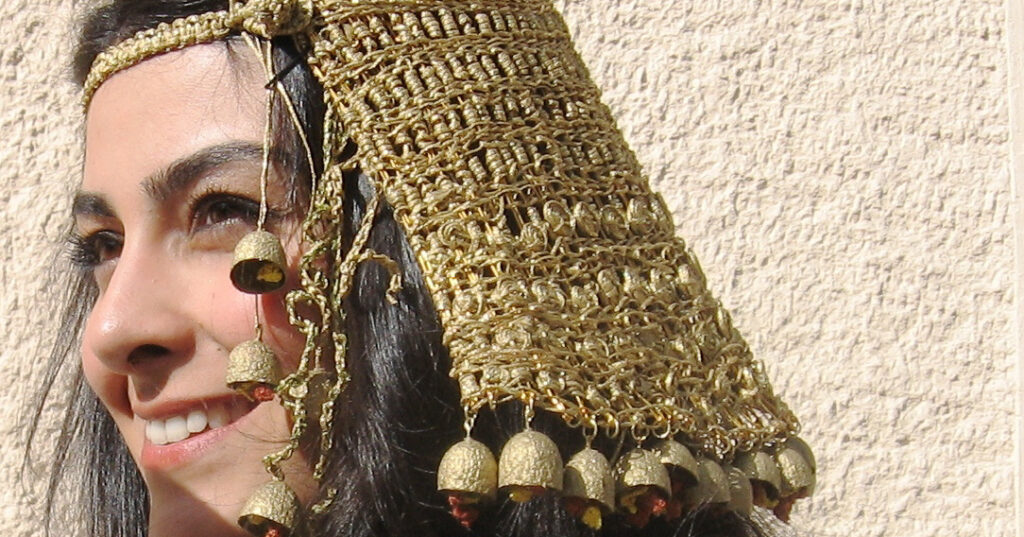 Tepelikler: My Anatolian grandmother’s headdress - Songül Aral recreates the traditional Anatolian gold and silver headdress that connects with her ancestors.
Tepelikler: My Anatolian grandmother’s headdress - Songül Aral recreates the traditional Anatolian gold and silver headdress that connects with her ancestors. 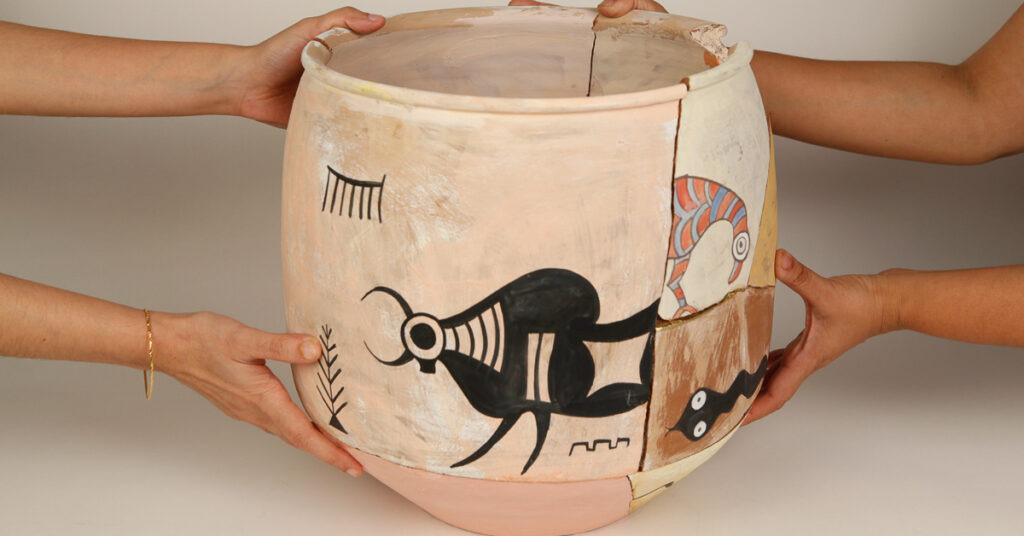 Sindhu – The river line: A dialogue - Pallavi Arora and Shirley Bhatnagar reanimate ancient pottery from the Indus valley civilisation
Sindhu – The river line: A dialogue - Pallavi Arora and Shirley Bhatnagar reanimate ancient pottery from the Indus valley civilisation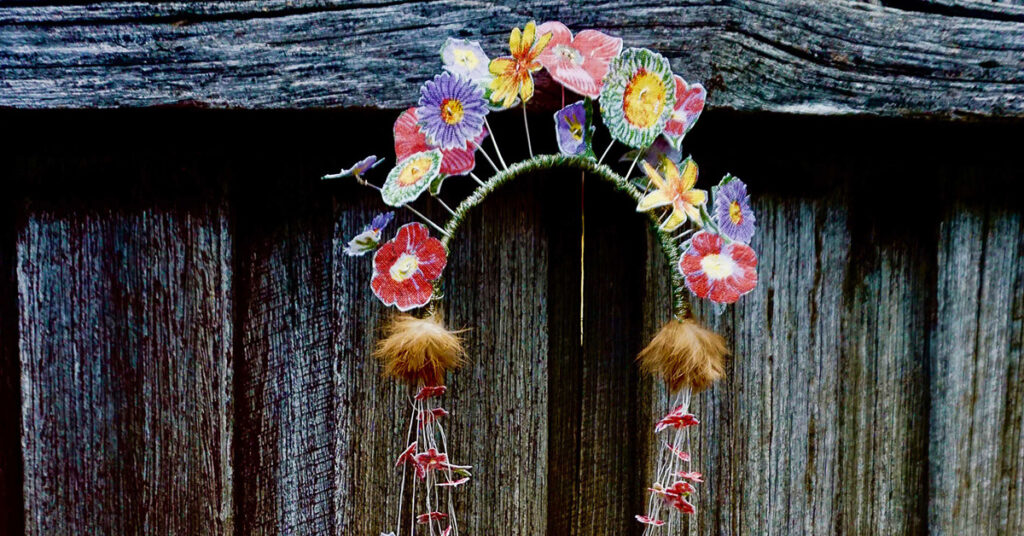 Heirloom: a celebration of herstories 🇵🇱 - Grace Pundyk re-creates a traditional Polish wianek headdress to sustain a matrilineal thread across generations and continents.
Heirloom: a celebration of herstories 🇵🇱 - Grace Pundyk re-creates a traditional Polish wianek headdress to sustain a matrilineal thread across generations and continents.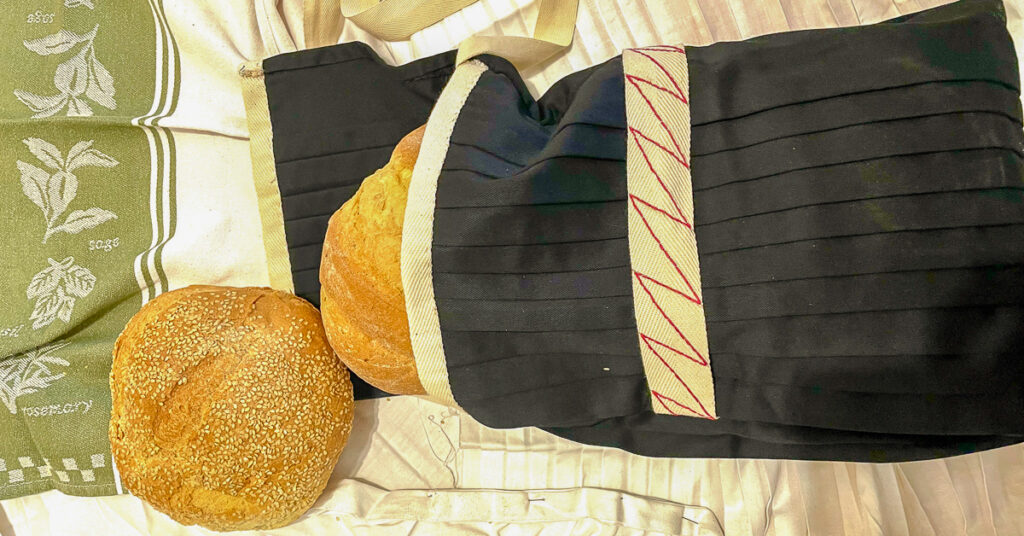 Mending collective memory: Eleni Gouga’s Bread-skirt Project - Eleni Gouga sought to revive the heirloom black woollen skirts of northern Greece, which then became a satchel for traditional bread.
Mending collective memory: Eleni Gouga’s Bread-skirt Project - Eleni Gouga sought to revive the heirloom black woollen skirts of northern Greece, which then became a satchel for traditional bread.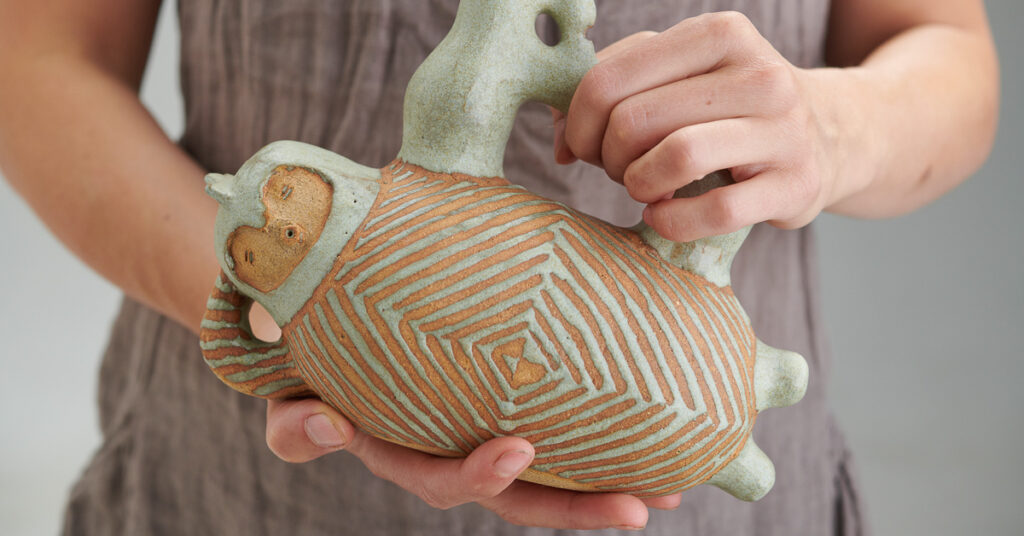 Cantarino: Reanimating the whistling bottles of the Andes - Francisca Gili Hanisch revives an ancient object that invests water with music for the afterlife.
Cantarino: Reanimating the whistling bottles of the Andes - Francisca Gili Hanisch revives an ancient object that invests water with music for the afterlife. 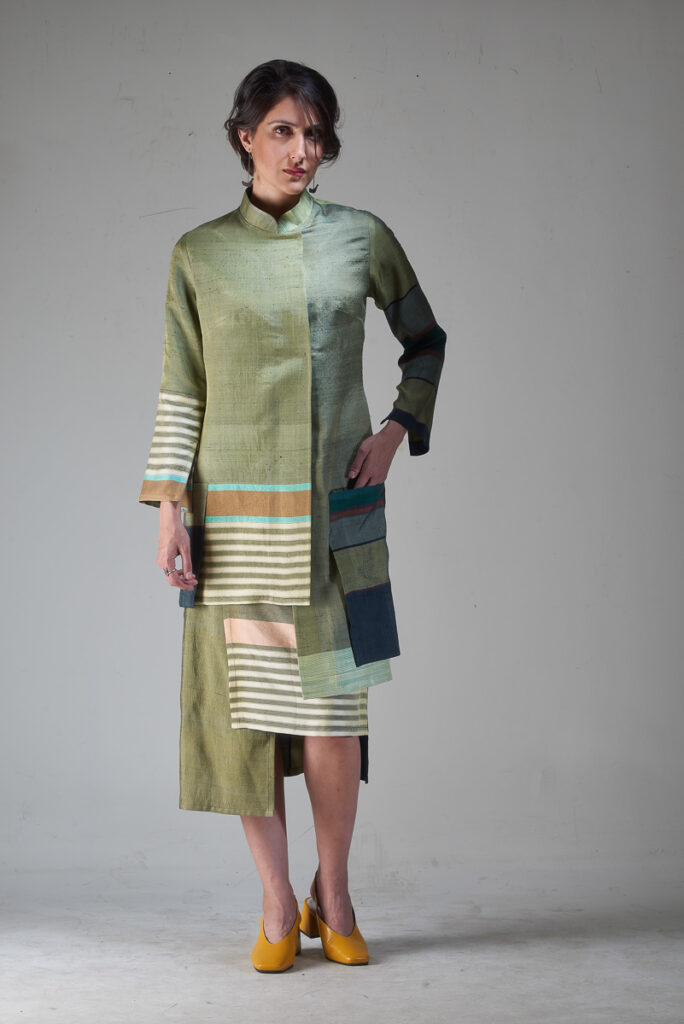 Azadeh Yasaman ✿ A disorderly beauty - Our February laurel goes to Iranian weaver and fashion designer, Azadeh Yasaman, who seeks to give new life to the ancient beauty of her culture.
Azadeh Yasaman ✿ A disorderly beauty - Our February laurel goes to Iranian weaver and fashion designer, Azadeh Yasaman, who seeks to give new life to the ancient beauty of her culture.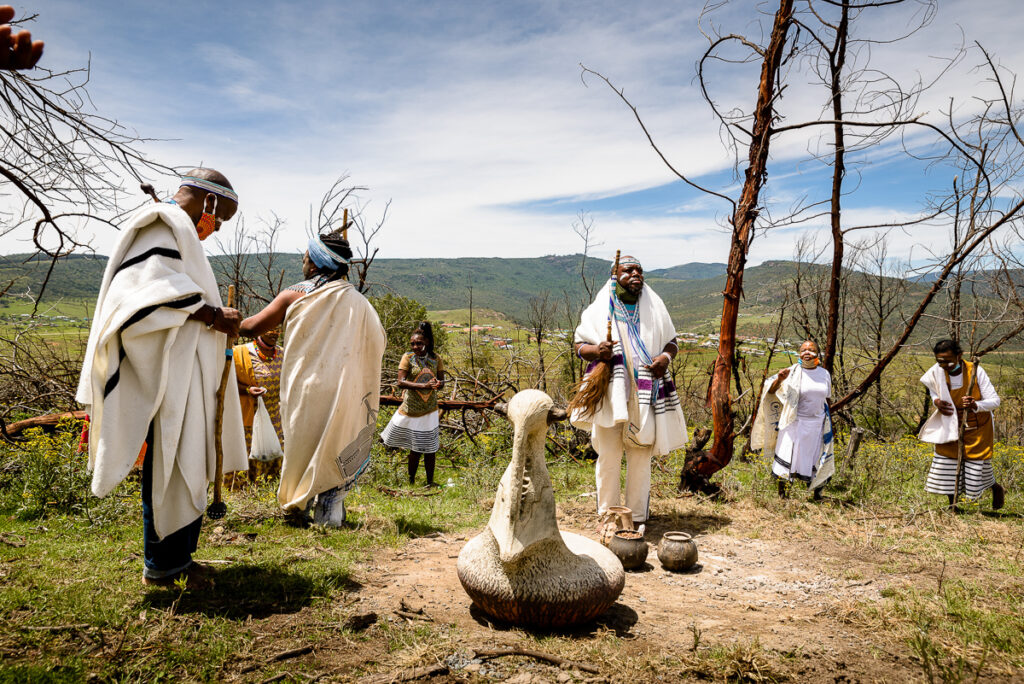 iThongo: Messages from the ancestors - Andile Dyalvane's new work inscribes Xhosa objects into ceramic seating that supports a gathering of his OoJola clan.
iThongo: Messages from the ancestors - Andile Dyalvane's new work inscribes Xhosa objects into ceramic seating that supports a gathering of his OoJola clan.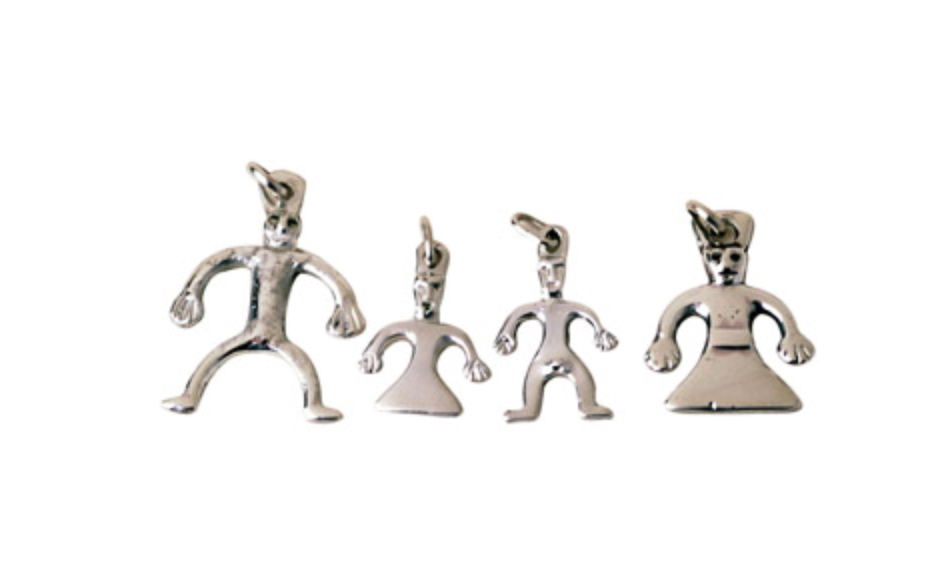 Pillan: The spirit of the volcano - The Mapuche silversmith Celeste Painepan Nicul tells how she acquired her cosmovision.
Pillan: The spirit of the volcano - The Mapuche silversmith Celeste Painepan Nicul tells how she acquired her cosmovision.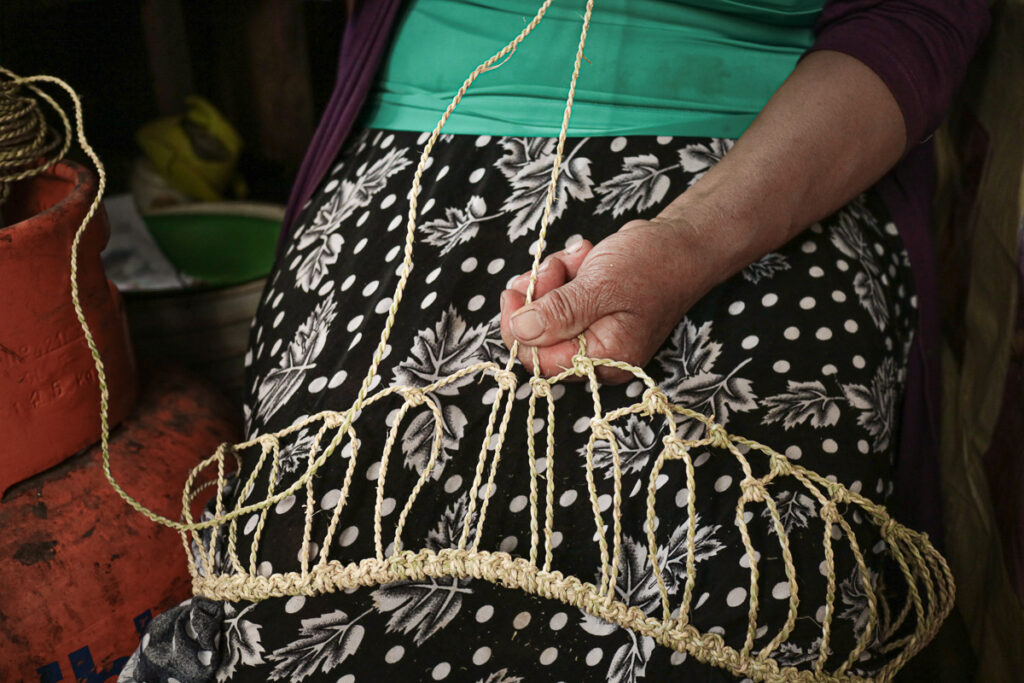 Pilwas: Knotting Lafkenche narratives in Puerto Saavedra - Magdalena Cattan-Lavin travels south to learn about the Mapuche string bag and how its popularity has been revived.
Pilwas: Knotting Lafkenche narratives in Puerto Saavedra - Magdalena Cattan-Lavin travels south to learn about the Mapuche string bag and how its popularity has been revived. 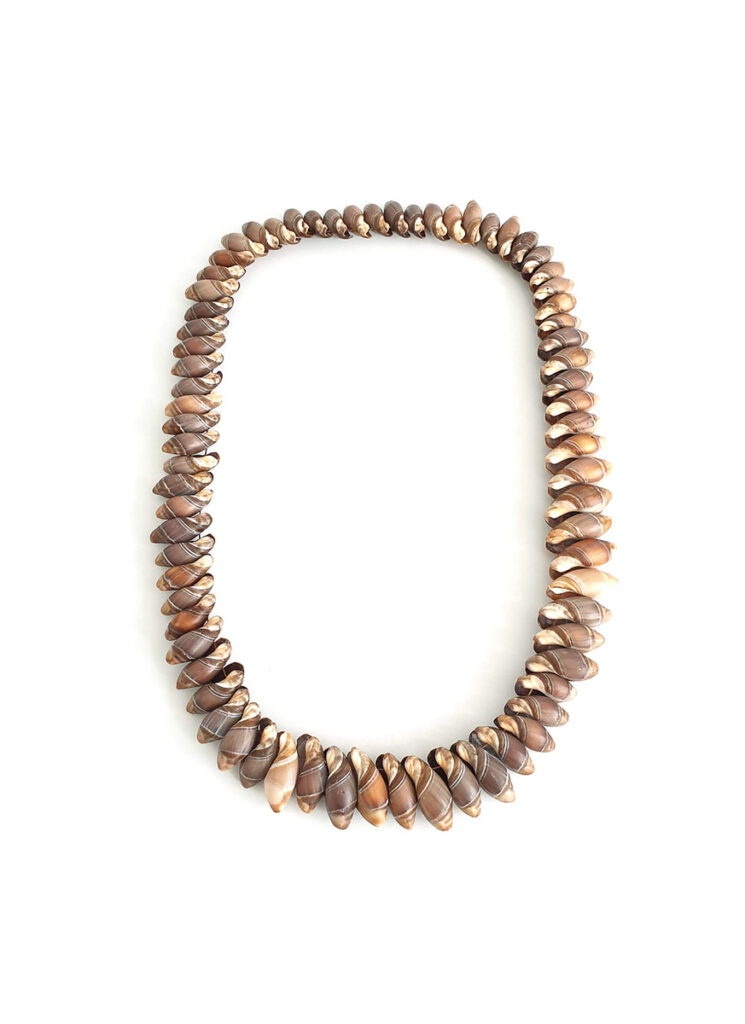 Māreikura: Exploring the goddess in Māori women - Neke Moa, adornment and object artist, describes how she explored the role and importance of wāhine (women) in the spiritual and physical world for her latest solo exhibition.
Māreikura: Exploring the goddess in Māori women - Neke Moa, adornment and object artist, describes how she explored the role and importance of wāhine (women) in the spiritual and physical world for her latest solo exhibition. Mapuche hybrid identify furnished from the periphery - Rodrigo Castro Hueche follows his family’s furniture work to craft objects that reflect a hybrid Mapuche identity.
Mapuche hybrid identify furnished from the periphery - Rodrigo Castro Hueche follows his family’s furniture work to craft objects that reflect a hybrid Mapuche identity.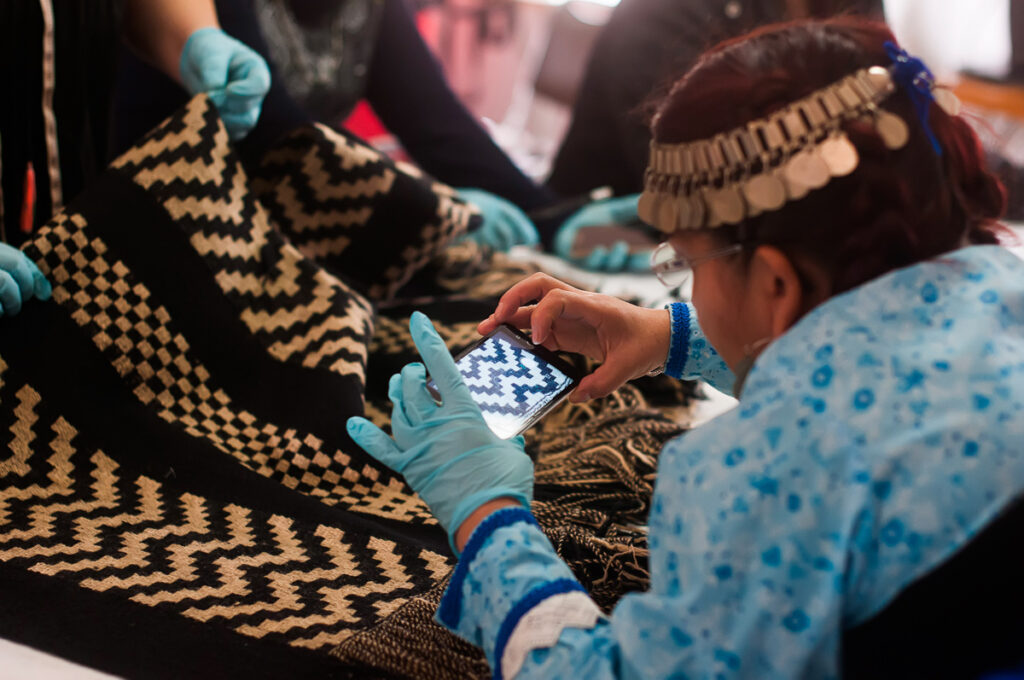 Heirs of Llalliñ: Mapuche women weavers find the end of the rainbow - Artesanías de Chile invited Mapuche weavers to the Museum of Natural History, where they studied ancient textiles that they would re-create back home.
Heirs of Llalliñ: Mapuche women weavers find the end of the rainbow - Artesanías de Chile invited Mapuche weavers to the Museum of Natural History, where they studied ancient textiles that they would re-create back home.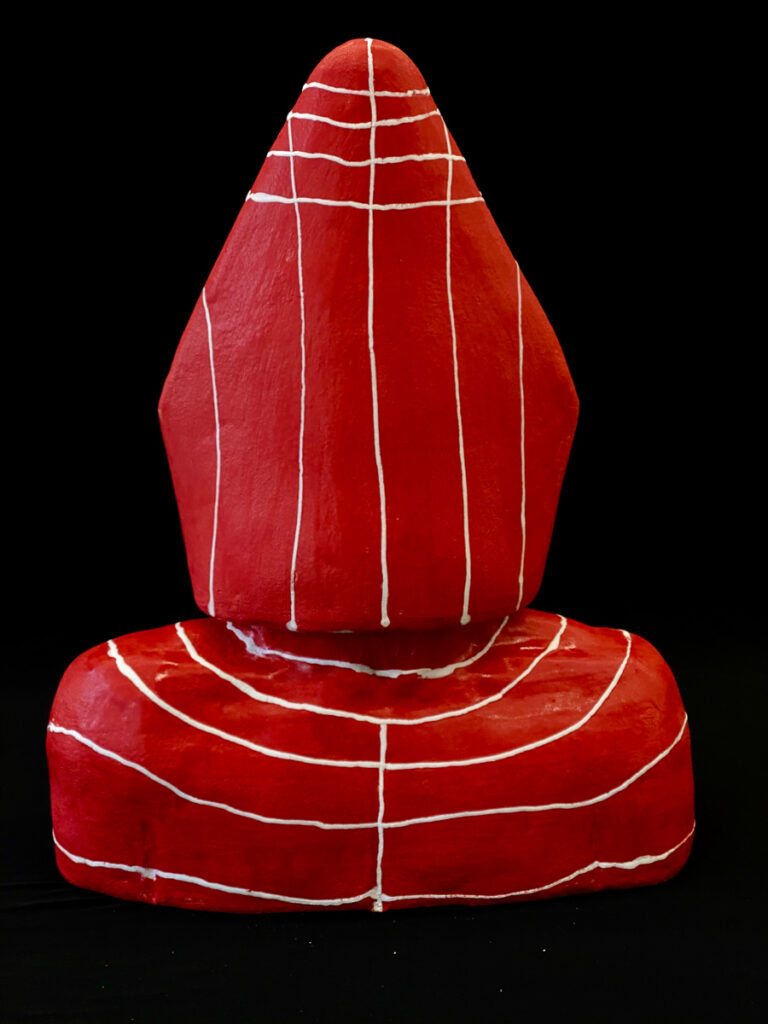 Te Hosek’en Harw: The Edge of the World - In consultation with the Selkn’am community, Sol Contardo created ceramic works inspired by their mysterious culture, located in Tierra del Fuego.
Te Hosek’en Harw: The Edge of the World - In consultation with the Selkn’am community, Sol Contardo created ceramic works inspired by their mysterious culture, located in Tierra del Fuego.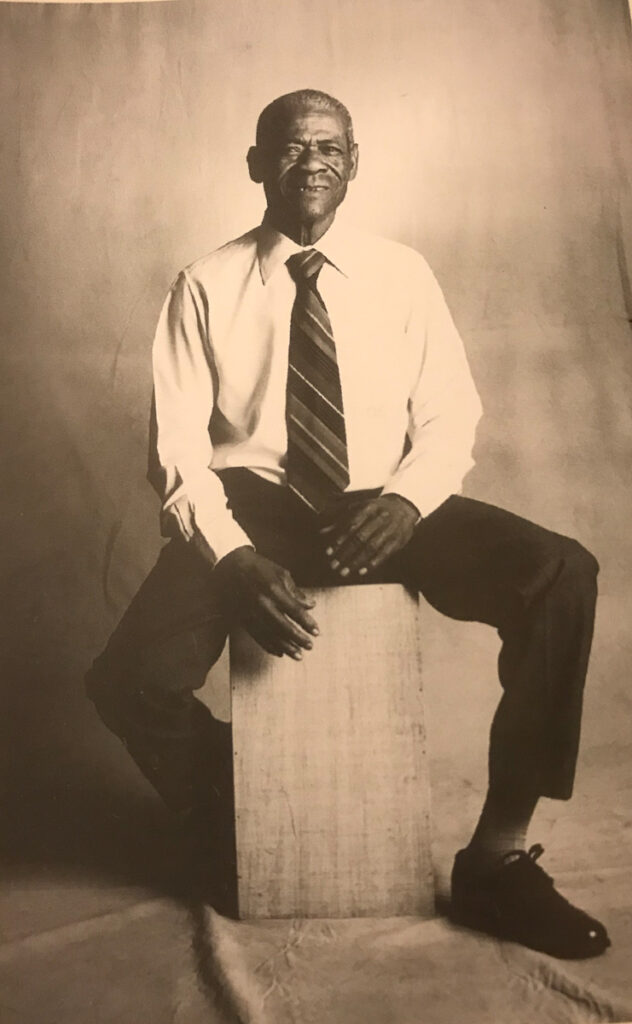 The Afro-Peruvian cajón: Reclaiming a humble percussion crate as one’s own - Aromica Bhattacharya tracks a percussion crate from its invention by African slaves to its eventual acknowledgment as intrinsic to Peruvian cultural heritage.
The Afro-Peruvian cajón: Reclaiming a humble percussion crate as one’s own - Aromica Bhattacharya tracks a percussion crate from its invention by African slaves to its eventual acknowledgment as intrinsic to Peruvian cultural heritage.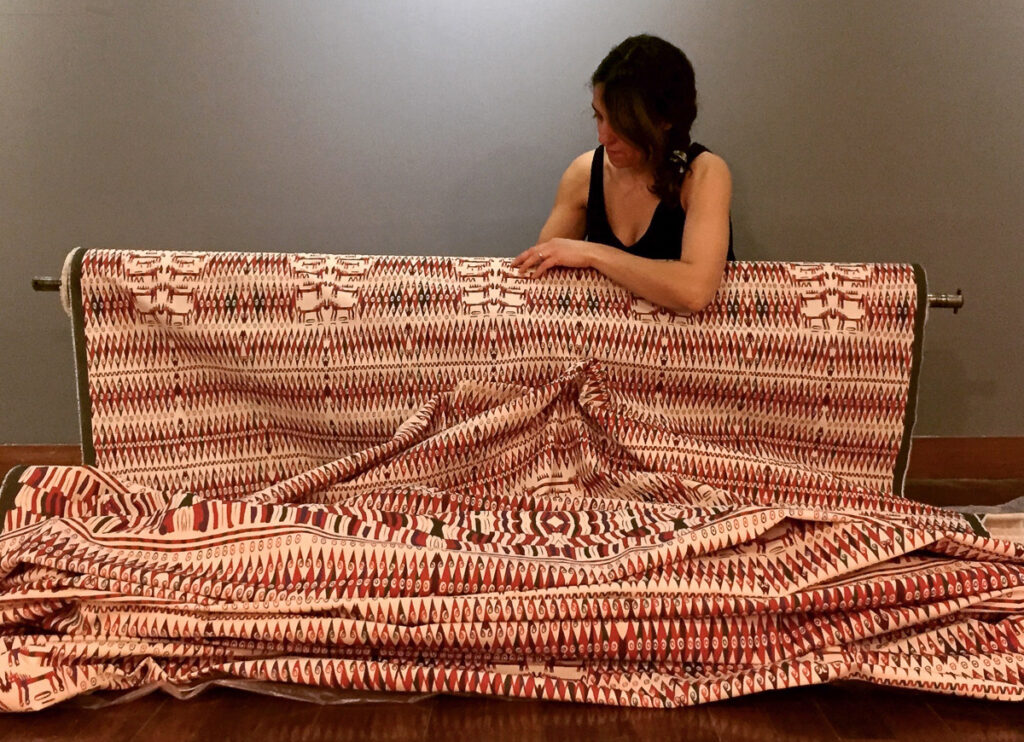 Charazani Project: Inca weaving revived - Constanza Urrutia Wegmann draws on a traditional Inca textile pattern to create a mesmerising weaving.
Charazani Project: Inca weaving revived - Constanza Urrutia Wegmann draws on a traditional Inca textile pattern to create a mesmerising weaving. Kamaquen: Ceramics powered by Andean energy - For Keka Ruiz-Tagle, ceramics channels the spirits of her Inca ancestors.
Kamaquen: Ceramics powered by Andean energy - For Keka Ruiz-Tagle, ceramics channels the spirits of her Inca ancestors. James Tylor ✿ Kaurna tool kit - Our November Laurel goes to James Tylor for his re-creation of the Kaurna tool kit, reflecting the revival of cultural skills across the wider world.
James Tylor ✿ Kaurna tool kit - Our November Laurel goes to James Tylor for his re-creation of the Kaurna tool kit, reflecting the revival of cultural skills across the wider world.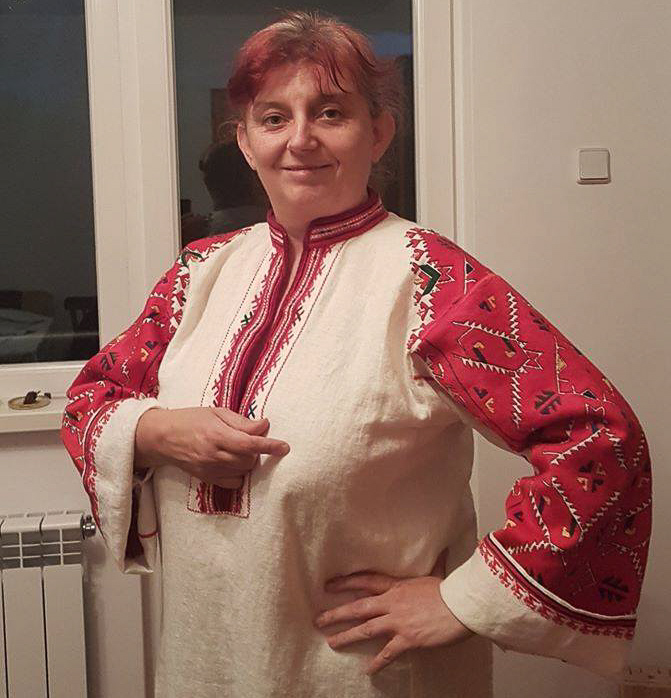 In lockdown, a Bulgarian recreates the past - At last, Bulgaria! Ani Georgieva Yoveva makes use of lockdown to revive an eighteenth-century folk costume.
In lockdown, a Bulgarian recreates the past - At last, Bulgaria! Ani Georgieva Yoveva makes use of lockdown to revive an eighteenth-century folk costume.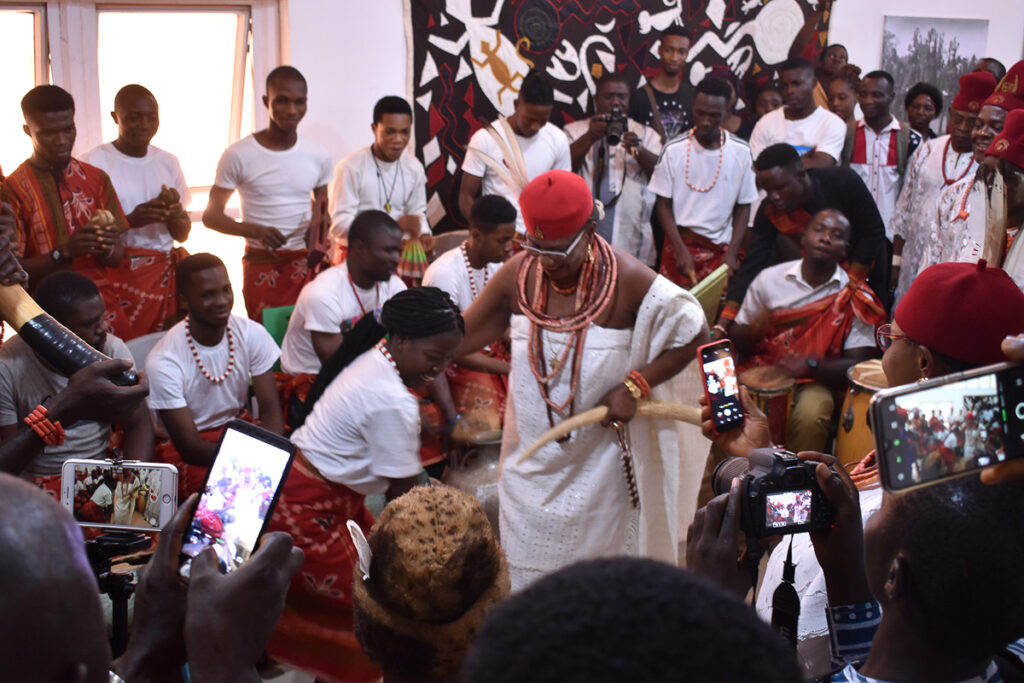 [Re:]Entanglements in Nigeria - Nigerian artists Jennifer Ogochukwu Okpoko and Dr RitaDoris Edumchieke Ubah are inspired by colonial photographs to make new textile work drawing on the heritage of uli body and wall painting.
[Re:]Entanglements in Nigeria - Nigerian artists Jennifer Ogochukwu Okpoko and Dr RitaDoris Edumchieke Ubah are inspired by colonial photographs to make new textile work drawing on the heritage of uli body and wall painting. Isifociya: The revival of Zulu adornment that protects and beautifies - Khanya Mthethwa transforms the traditional Zulu girdle into a fashion item for proud South Africans
Isifociya: The revival of Zulu adornment that protects and beautifies - Khanya Mthethwa transforms the traditional Zulu girdle into a fashion item for proud South Africans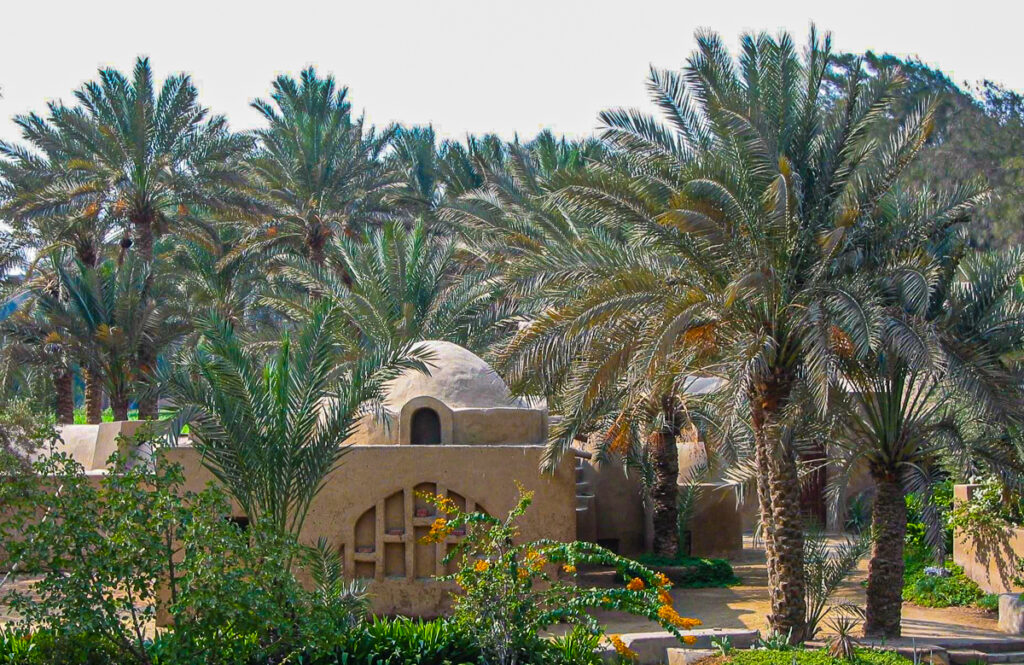 Wissa-Sophy: Back to the woven garden - Passent Nossair returns to the refreshing gardens of El Harraneya in Giza, Egypt, where she learns the remarkable story of Wissa Wassef, whose belief in the inner creativity of children helped build a weaving workshop of international renown.
Wissa-Sophy: Back to the woven garden - Passent Nossair returns to the refreshing gardens of El Harraneya in Giza, Egypt, where she learns the remarkable story of Wissa Wassef, whose belief in the inner creativity of children helped build a weaving workshop of international renown.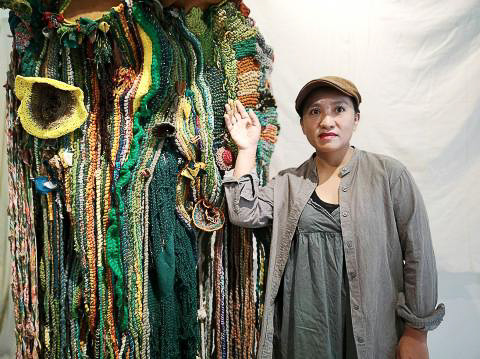 Taipei Biennial 2020 ✿ Aruwai Kaumakan - Paiwanese artist Aruwai Kaumakan is reviving the snake motif in her textiles for the upcoming Taipei Biennial.
Taipei Biennial 2020 ✿ Aruwai Kaumakan - Paiwanese artist Aruwai Kaumakan is reviving the snake motif in her textiles for the upcoming Taipei Biennial. 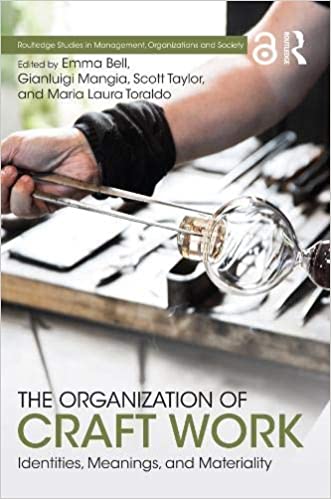 The rise of “craftship”: The Organization of Craft Work: Identities, Meanings, and Materiality - A new anthology follows up Richard Sennett's The Craftsman by tracking the revival of craft values in contemporary work.
The rise of “craftship”: The Organization of Craft Work: Identities, Meanings, and Materiality - A new anthology follows up Richard Sennett's The Craftsman by tracking the revival of craft values in contemporary work. Finding Mahtab and starting a new life - Khosro Mahinroosto tells how finding the legendary Baluchistan needle-worker changed his life and led to the establishment of Gileboom eco-lodge.
Finding Mahtab and starting a new life - Khosro Mahinroosto tells how finding the legendary Baluchistan needle-worker changed his life and led to the establishment of Gileboom eco-lodge.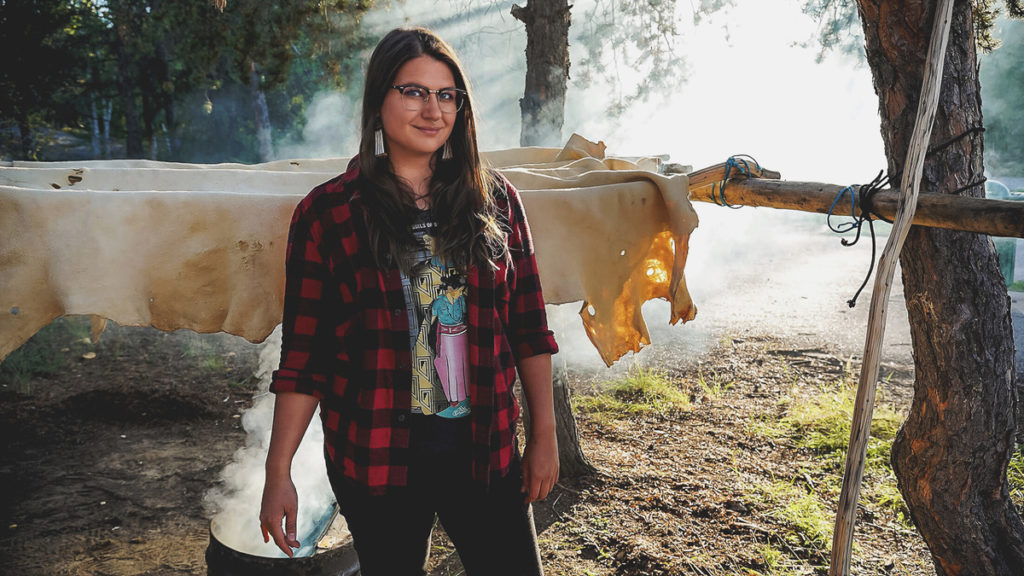 Tania Larsson ✿ Hide uncovers the hidden - matt lambert interviews a Canadian jewellery artist about the process of making hide in Gwich’in culture
Tania Larsson ✿ Hide uncovers the hidden - matt lambert interviews a Canadian jewellery artist about the process of making hide in Gwich’in culture Kamunez ✿ How the kiekie girdles Moana - Mele Tonga Tamanilo celebrates the traditional Tongan waist adornment known as kiekie by inventing new designs and introducing new eye-catching materials.
Kamunez ✿ How the kiekie girdles Moana - Mele Tonga Tamanilo celebrates the traditional Tongan waist adornment known as kiekie by inventing new designs and introducing new eye-catching materials.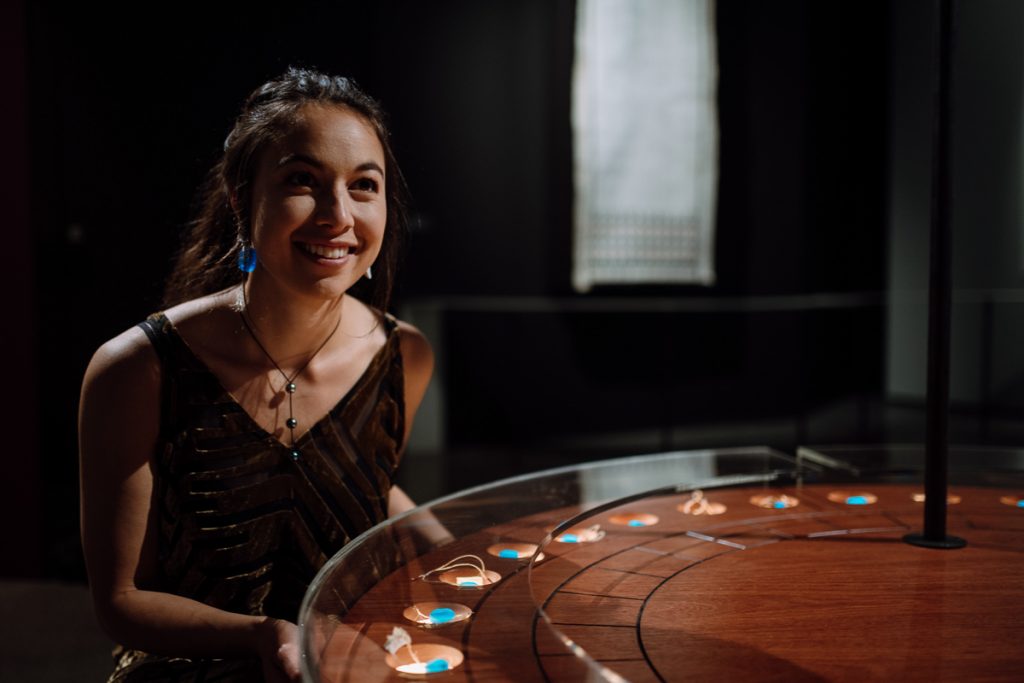 Nikau Hindin ✿ A star compass that makes history - Ngāpuhi and Te Rarawa artist Nikau Hindin created an installation Kāpehu Whetū, Star Compass at Auckland's Maritime Museum. This work uniquely draws on traditions of navigation across Moana with unfinished business from first encounters with European colonists.
Nikau Hindin ✿ A star compass that makes history - Ngāpuhi and Te Rarawa artist Nikau Hindin created an installation Kāpehu Whetū, Star Compass at Auckland's Maritime Museum. This work uniquely draws on traditions of navigation across Moana with unfinished business from first encounters with European colonists.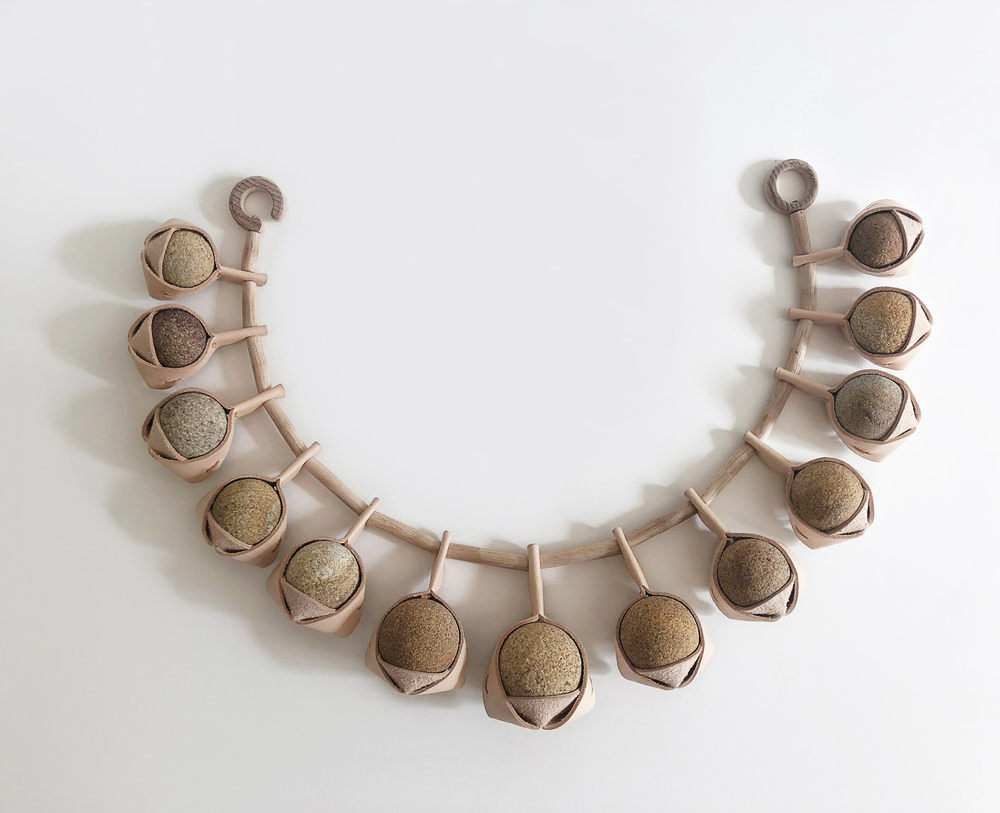 Kyoko Hashimoto ✿ the Musubi necklace - Kyoko Hashimoto's Musubi necklace is a striking example of how a Japanese craft technique can help us appreciate the local quality of another country, in this case the sandstone that defines the Sydney basin.
Kyoko Hashimoto ✿ the Musubi necklace - Kyoko Hashimoto's Musubi necklace is a striking example of how a Japanese craft technique can help us appreciate the local quality of another country, in this case the sandstone that defines the Sydney basin. Liziqi ✿ China’s craft princess - "Nowadays time goes by so quickly that we yearn for Li Ziqi’s lifestyle." The story of Liziqi tells us much about the wave of interest in China's traditional culture today.
Liziqi ✿ China’s craft princess - "Nowadays time goes by so quickly that we yearn for Li Ziqi’s lifestyle." The story of Liziqi tells us much about the wave of interest in China's traditional culture today.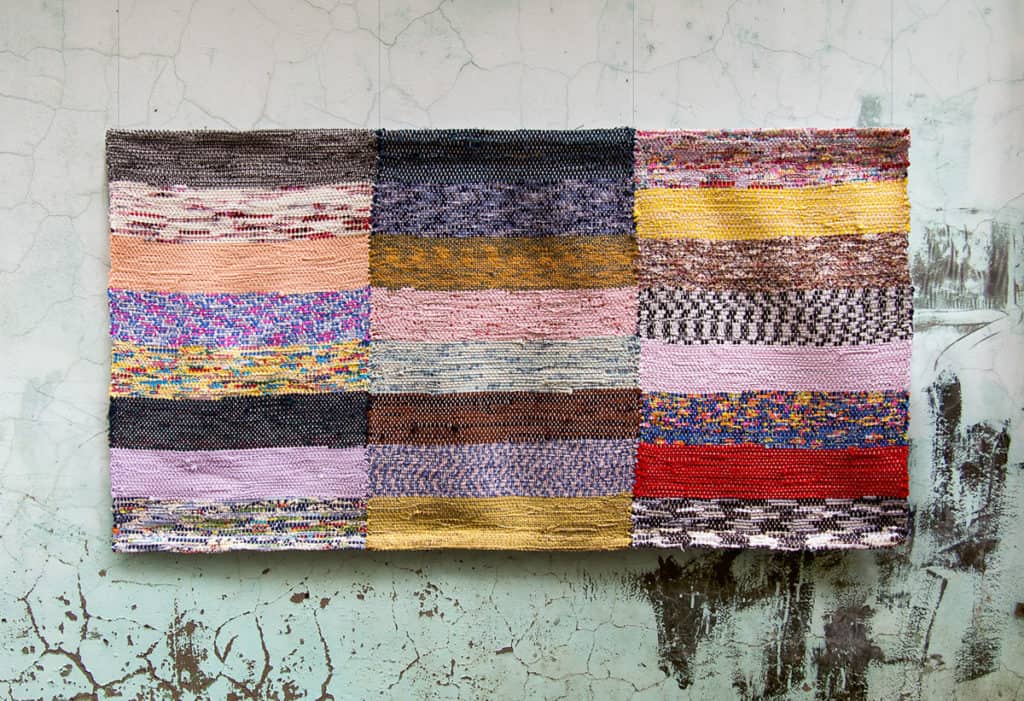 Weaving Pang Jai: In search of old Hong Kong - Eloise Rapp goes in search of a textile that embodies the ramshackle identity of old Hong Kong.
Weaving Pang Jai: In search of old Hong Kong - Eloise Rapp goes in search of a textile that embodies the ramshackle identity of old Hong Kong. Lessons learned from a duck herder’s gamelan 🎵 - Rosie Cook goes in search of the rare Bundengan musical instrument from Indonesia and discovers a melodious revival.
Lessons learned from a duck herder’s gamelan 🎵 - Rosie Cook goes in search of the rare Bundengan musical instrument from Indonesia and discovers a melodious revival. Luo Wanxing ✿ A life’s hard labour for sweet reward - Our China correspondent, Xue XIA, offers a recent homage to the end of a once-thriving trade in China - brown sugar making.
Luo Wanxing ✿ A life’s hard labour for sweet reward - Our China correspondent, Xue XIA, offers a recent homage to the end of a once-thriving trade in China - brown sugar making.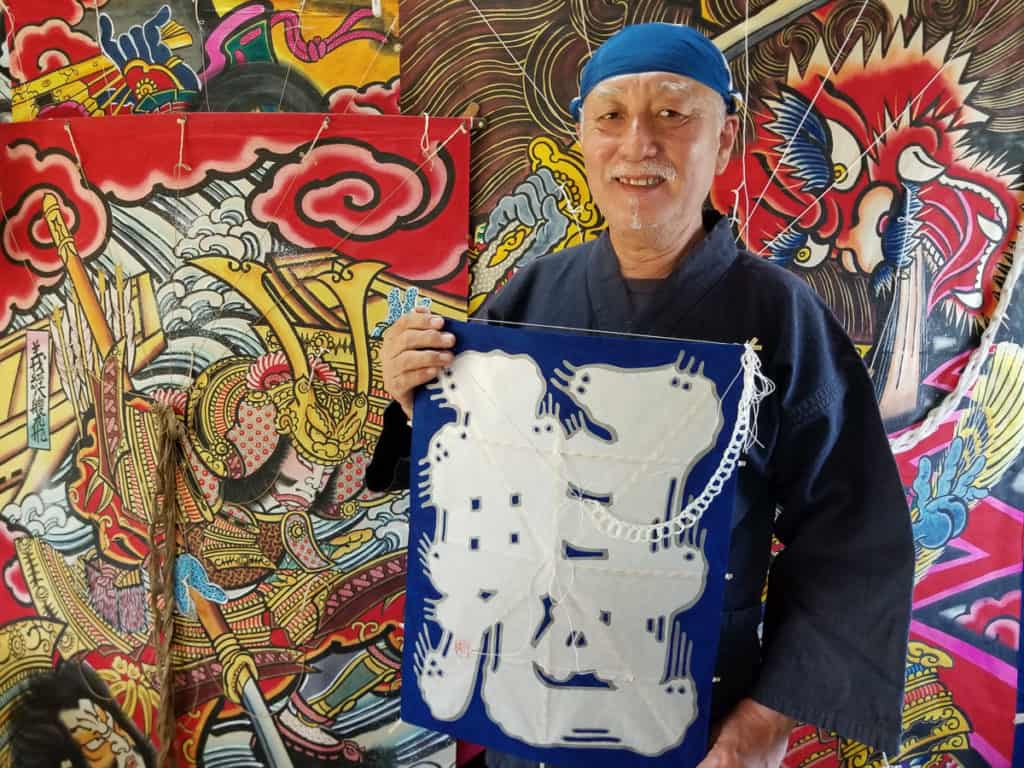 Mikio Toki ✿ Edo kites keep hope afloat - Our pursuit of beautiful and thoughtful objects can take us far beyond the gallery. From kite-maker Mikio Toki, we learn that art taken to the skies can be a powerful way of giving thanks.
Mikio Toki ✿ Edo kites keep hope afloat - Our pursuit of beautiful and thoughtful objects can take us far beyond the gallery. From kite-maker Mikio Toki, we learn that art taken to the skies can be a powerful way of giving thanks.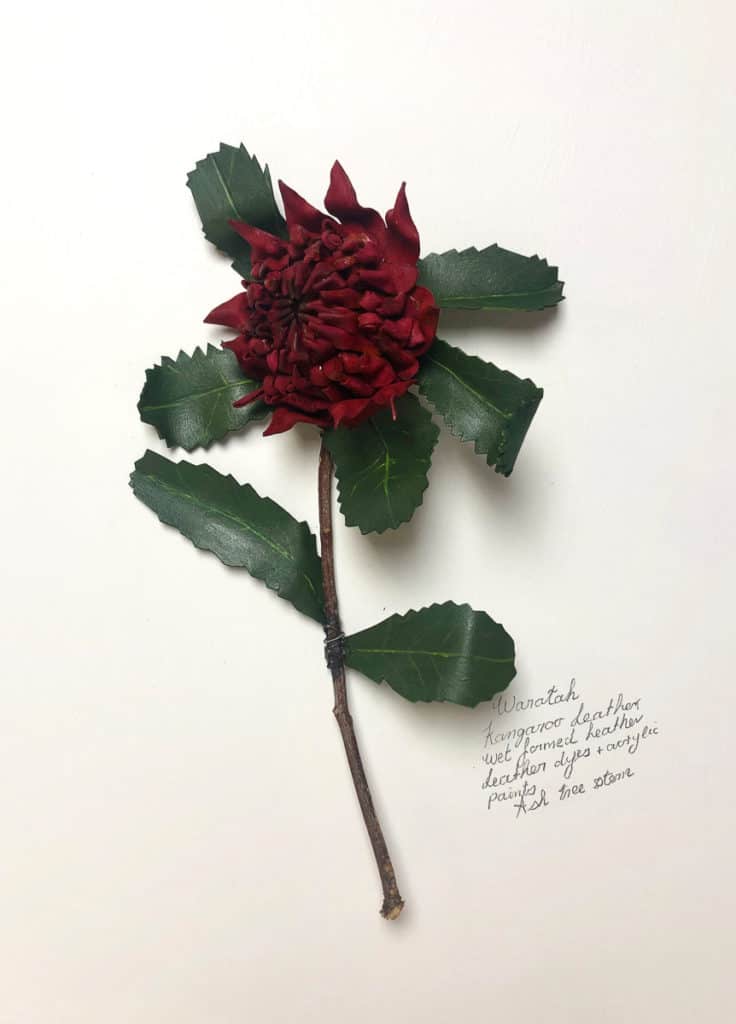 Kinder, Küche, Kirche ✿ New mementos of the Barossa - 11 South Australian artists make works that honour the heritage crafts of the Lutheran German community from the Barossa.
Kinder, Küche, Kirche ✿ New mementos of the Barossa - 11 South Australian artists make works that honour the heritage crafts of the Lutheran German community from the Barossa. 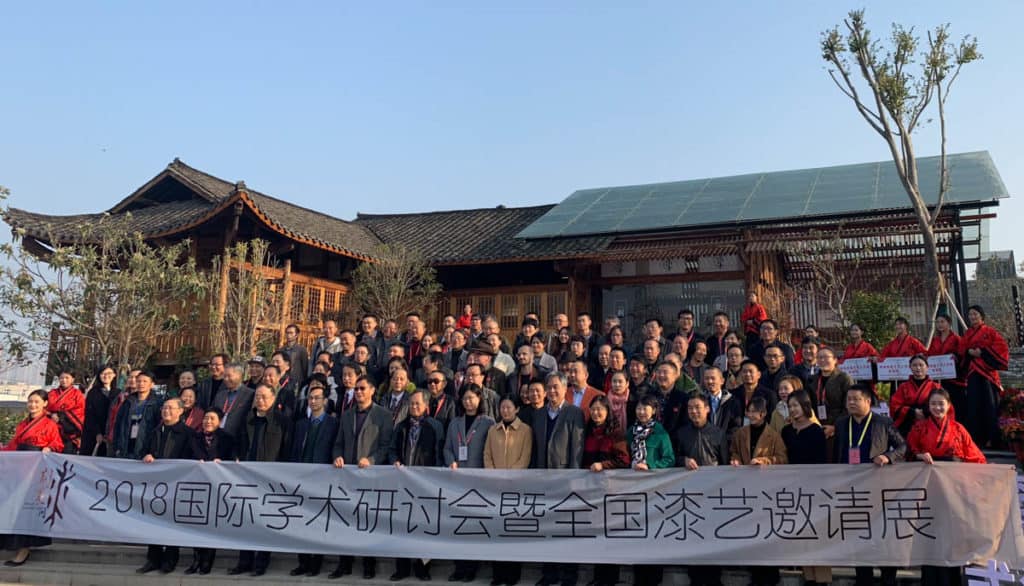 China’s craft revival: The cultural shift - Drawing on her recent research, Yin Huang reflects on the increased cultural focus on crafts in China and the opportunities it opens for foreign organisations.
China’s craft revival: The cultural shift - Drawing on her recent research, Yin Huang reflects on the increased cultural focus on crafts in China and the opportunities it opens for foreign organisations. The re-awakening of lacquer in China today 🇨🇳 - Liu Huan reflects personally on the enduring value of lacquer in Chinese culture and project to revive its spirit for modern consumers.
The re-awakening of lacquer in China today 🇨🇳 - Liu Huan reflects personally on the enduring value of lacquer in Chinese culture and project to revive its spirit for modern consumers. 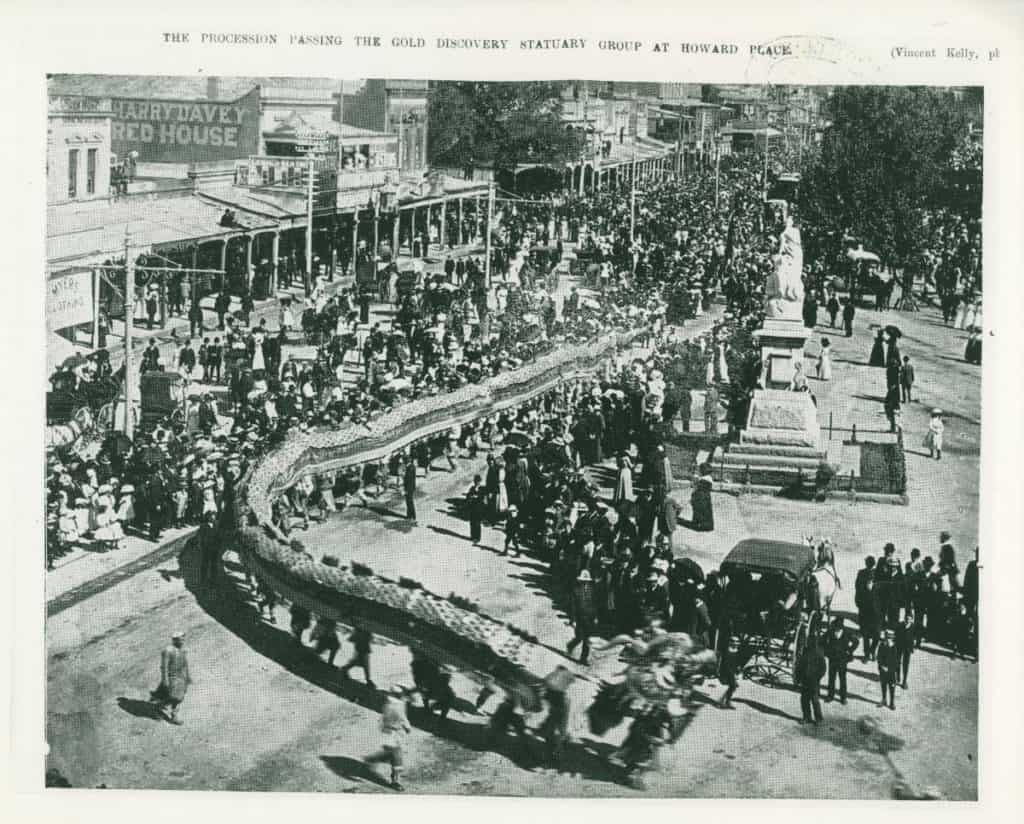 Dragon reborn: The making of Bendigo’s Dai Gum Loong - Leigh McKinnon writes about the revival of skills from Hong Kong involved in the new Bendigo dragon
Dragon reborn: The making of Bendigo’s Dai Gum Loong - Leigh McKinnon writes about the revival of skills from Hong Kong involved in the new Bendigo dragon Why a Japanese lacquer master sought a surfing legend - Lacquer is a gift of the ancients that is largely forgotten today. Sachiko Matsuyama is convinced of its value not just for its redolent surface but also as a bond between people and nature. She finds an inspiring future for lacquer in the work of Takuya Tsutsumi, in partnership with an Australian surfboard maker.
Why a Japanese lacquer master sought a surfing legend - Lacquer is a gift of the ancients that is largely forgotten today. Sachiko Matsuyama is convinced of its value not just for its redolent surface but also as a bond between people and nature. She finds an inspiring future for lacquer in the work of Takuya Tsutsumi, in partnership with an Australian surfboard maker. 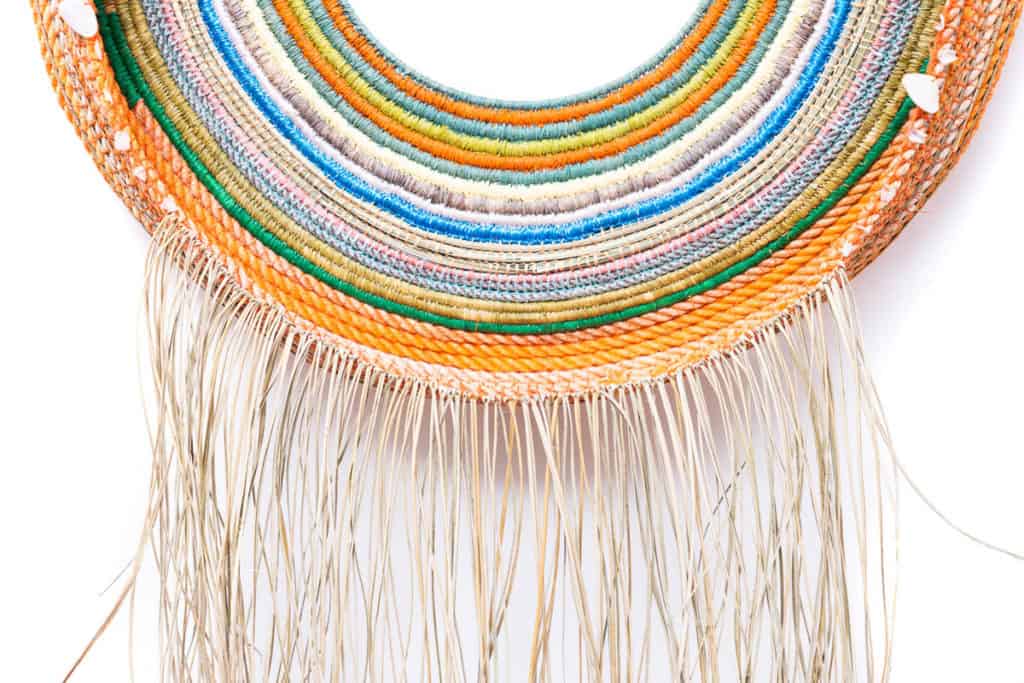 Elisa-Jane Carmichael ✿ Weaving with ancestors - Sally Butler writes about Quandamooka artist Elisa-Jane Carmichael, who interprets her fibre tradition in stunning new forms
Elisa-Jane Carmichael ✿ Weaving with ancestors - Sally Butler writes about Quandamooka artist Elisa-Jane Carmichael, who interprets her fibre tradition in stunning new forms✿
Go back to the Garden.

